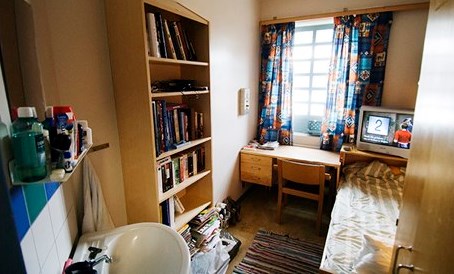There is a very interesting article in The Atlantic that we came across and were amazed with the fact presented. The comparison made between Scandinavian and American prisons immediately inspired us to write about it in our PRISON CALL DEALS Buzz section.
Did you know that in Finland there are a lot of ‘open’ prisons in which inmates are allowed to live like regular citizens? But, if you can’t tell whether the person is in prison, can it be a prison?
As it turns out, the reporter stated that he made a shocking conclusion while visiting this kind of ‘facility’ – there is no punishment so effective as the punishment that nowhere announces the intention to punish.
How does it work? Very simple and humane!
The prisoners in this kind of facilities leave it’s ground every day to go to the nearby town to do the general maintenance or to commute to work or study. Even though the prisoners serve time for theft, drug trafficking, assault or murder, they don’t feel like being behind bars because cellblocks resemble university dorms. And the rooms of this ‘dorm’ feature flat-screen TVs, sound systems, and mini-refrigerators for the prisoners who can afford to rent them for prison-labor wages of $5.30 to $9.50 per hour.

Source: http://www.theatlantic.com/international/archive/2013/09/why-scandinavian-prisons-are-superior/279949/?single_page=true
Also, since prisoners have electronic monitoring, they are allowed to spend time with their families in Helsinki. The barbecue pit, gym, and a dining hall where prisoners and staff eat together are also available for all inmates. Prisoners throughout Scandinavia wear their own clothes. Officers wear navy slacks, powder-blue shirts, nametags and shoulder bars; but they carry no batons, handcuffs, Tasers or pepper-spray.
However, not all prisons in Scandinavia are like this. There are a number of closed prisons that are actually copied from Philadelphia’s Eastern State, or New York’s Auburn, back when those prisons represented models of humane treatment. But even high-security prisons in Denmark, Norway, Sweden and Finland have common areas that include table tennis, pool tables, steel darts, and aquariums, and prisoner art ornamented walls.
But the most profound difference is that correctional officers fill both rehabilitative and security roles. Each prisoner has a “contact officer” who monitors and helps advance progress toward return to the world outside.
The key point here is that this is all possible because, throughout Scandinavia, criminal justice policy rarely enter political debate. Decisions about best practices are left to professionals in the field, who are often published criminologists and consult closely with academics. Anybody taking notes?
You can read more similar and motivating stories of successful inmate rights, and other stories of inmate support, in our BUZZ section, and you can contribute to the discussion, by sending us your comments and contributions – YOUR VOICE!







